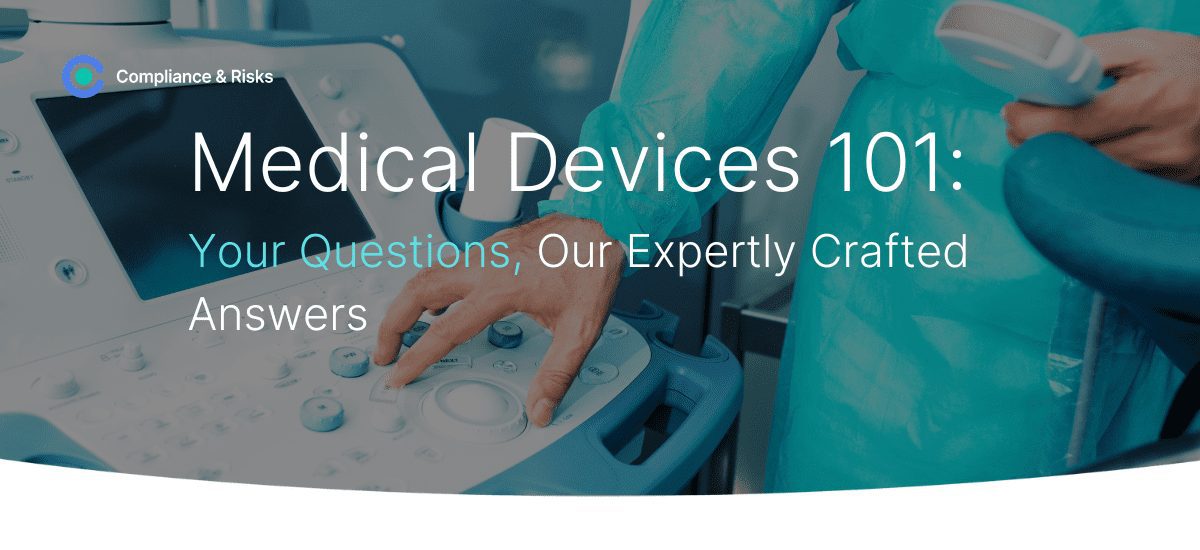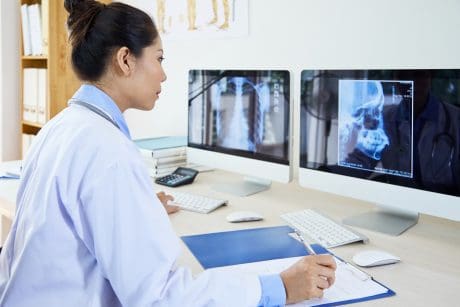
Medical Devices 101 | Your Questions | June 2024

Medical devices face a unique regulatory landscape that has been increasingly complicated by several factors in recent years.
The demand for more sustainable technology is being driven by both consumer demand and legislators, leading to regulatory implications. Global events such as Brexit and COVID-19 have also created unprecedented challenges.
As devices become increasingly integrated with artificial intelligence and an internet connection, new cybersecurity and data protection legislation is racing to keep up.
And on top of all this, the new regulatory framework for IVDR and proposed amendments for the registration, and inspection of medical devices under MDR means staying ahead is more critical than ever.
In this series, we gather some of the most interesting recent inquiries from Compliance & Risks customers regarding medical device regulatory updates globally.
Question 1: Regarding the EU Position as Regards the Proposal for Amendment of Annex A to the Stockholm Convention on Persistent Organic Pollutants, Decision (EU) 2023/1006, are there any exemptions?
Generally, the listing of a substance in Annex A of the POPs Stockholm Convention entails that parties to the Convention must take measures to eliminate their production and use. In this regards, the COP Decision SC-11/11 on the listing of UV-328 in Annex A to the Convention that would be effective from 26 February 2025 (a year following the date of communication of the COP’s decision to the UN depositary notifications) aims for the elimination and the use of UV-328 at global level.
The listed specific time-limited exemptions would apply to the replacement parts for articles where UV-328 was originally used in the manufacture of those articles and may be available, limited to the following applications, until the end of the service life of the articles as follows:
Until 2044, whichever comes earlier for:
- Liquid crystal displays in instruments for analysis, measurements, control, monitoring, testing, production and inspection (such as recorders, infrared radiation thermometers, digital storage oscilloscopes, and radiographic testing instruments) other than for medical applications;
- Motor vehicles (covering all land-based vehicles, such as cars, motorcycles, agricultural and construction vehicles and industrial trucks);
- Stationary industrial machines (such as tower cranes, concrete plants, and hydraulic crushers) for use in agriculture, forestry, and construction.
No later than 2041, for:
- Liquid crystal displays in medical and in-vitro diagnostic devices (such as ultrasound diagnostic devices, flexible endoscopes, immunoassay analyzers, clinical chemistry analyzers, and blood coagulation analyzers); and
- Liquid crystal displays in instruments for analysis, measurements, control, monitoring, testing, production, and inspection (such as recorders, infrared radiation thermometers, digital storage oscilloscopes, and radiographic testing instruments).
Question 2: Under EU BPR, Ethylene Oxide met the exclusion criteria and as a result will be regulated for medical devices under the MDR. How is it regulated in the UK?
Currently in the UK, it is an existing biocidal active substance in the GB Review Programme (see infocard on ECHA website).
Until the review is concluded, it may still be used (subject to approval) in treated articles or disinfectants intended for either medical devices or pharmaceuticals products (see GB BPR list of active substances).
Question 3: Regarding Vermont (USA): Regulating Consumer Products Containing Perfluoroalkyl and Polyfluoroalkyl Substances (PFAS) and Other Chemicals, Senate Bill 25 Enacted, 2024, are pharmaceutical products in scope of the regulation, and what are the requirements?
Medical devices and drugs are not within the scope of the restrictions of this Vermont legislation.
Senate Bill 25 Enacted, now Statute – at § 2494e. DEFINITIONS Sec. (8)(B), declares that Medical Devices are exempt from the definition of “Juvenile Products” used in the text. This indicates that devices that are medical are not subject to the restrictions and prohibitions that apply to other products.
In the text of this bill, Cosmetic products are restricted, and “food and drugs approved by the U.S. Food and Drug Administration” are exempt, so it can be assumed that approved drugs are also not subject to restrictions applied to the specified consumer products.
However, this state bill requires the Agency of Natural Resources, the Agency of Agriculture, Food and Markets; the Department of Health; and the Office of the Attorney General to determine whether “a drug, medical device, or dietary supplement” are property regulated. The Agencies are then, under this Section, to report to the Legislature and other Agencies with an “implementation plan” by November 1, 2024. This requirement, if it is fulfilled, may at some point have an effect on the regulation of medical devices and drugs.
(at Sec. 9. IMPLEMENTATION PLAN; CONSUMER PRODUCTS CONTAINING PFAS).
There is no further mention of “medical devices” or “drugs” within the text of the bill.
As per the text referred to in the bill and related statutes:
§ 2494e. DEFINITIONS Sec. (10) “Medical device” has the same meaning given to “device” in 21 U.S.C. § 321 – which is a definition of a “medical device”, under TITLE 21. FOOD AND DRUGS:
“(h)(1) The term “device” (except when used in paragraph (n) of this section and in sections 331(i), 343(f), 352(c), and 362(c) of this title) means an instrument, apparatus, implement, machine, contrivance, implant, in vitro reagent, or other similar or related article, including any component, part, or accessory, which is-
(A) recognized in the official National Formulary, or the United States Pharmacopeia, or any supplement to them,
(B) intended for use in the diagnosis of disease or other conditions, or in the cure, mitigation, treatment, or prevention of disease, in man or other animals, or
(C) intended to affect the structure or any function of the body of man or other animals, and
which does not achieve its primary intended purposes through chemical action within or on the body of man or other animals and which is not dependent upon being metabolized for the achievement of its primary intended purposes…”
And, “(n) If an article is alleged to be misbranded because the labeling or advertising is misleading, then in determining whether the labeling or advertising is misleading there shall be taken into account in accordance with section 343(r)(6) of this title is not a drug under clause (C) solely because the label or the labeling contains such a statement. “
among other exceptions. (paragraph (n) of this section and in sections 331(i), 343(f), 352(c), and 362(c) of this title).
Stay Compliant With Global Medical Device Regulations:
Catch up on our medical device updates with your coffee here:
- Medical Device Regulation Checklist: Brazil
- Regulatory Trends in Medical Devices: A 12-18 Month Outlook
- Software As A Medical Device – Definition and Classification in the EU, USA, China, and Japan
- European Union (EU) In Vitro Diagnostic Regulation 2017/746 (IVDR) and Cybersecurity
Have you got a Medical Device related query?
Many of the above questions were submitted and answers were conveyed by Compliance & Risks customers via the “Ask Our Experts” button in C2P.
Clients use AOE to ask about the latest proposed, enacted, and amended regulations and mandatory standards applicable to their products and geographies of interest.
When AOE questions can be answered in 30 minutes or less, Compliance & Risks’ subject matter experts answer them at no charge!
To learn more about C2P and how Compliance & Risks SMEs can help you with your questions, contact us today.
Meet our Experts

Global Regulatory Compliance Team
Our team of experts will elevate your strategic edge by addressing questions about laws and regulations. Fluent in almost 30 languages and backed by an extensive database of 90,000+ sources, our experts bring unparalleled knowledge to the table. Moreover, our expert team is dedicated to educating your organization, fostering better engagement, and ensuring your compliance and risk management strategies are second to none. With our team of seasoned professionals by your side, you’ll gain a competitive edge in navigating the complex landscape of compliance management, gaining deeper insights and valuable guidance.


